

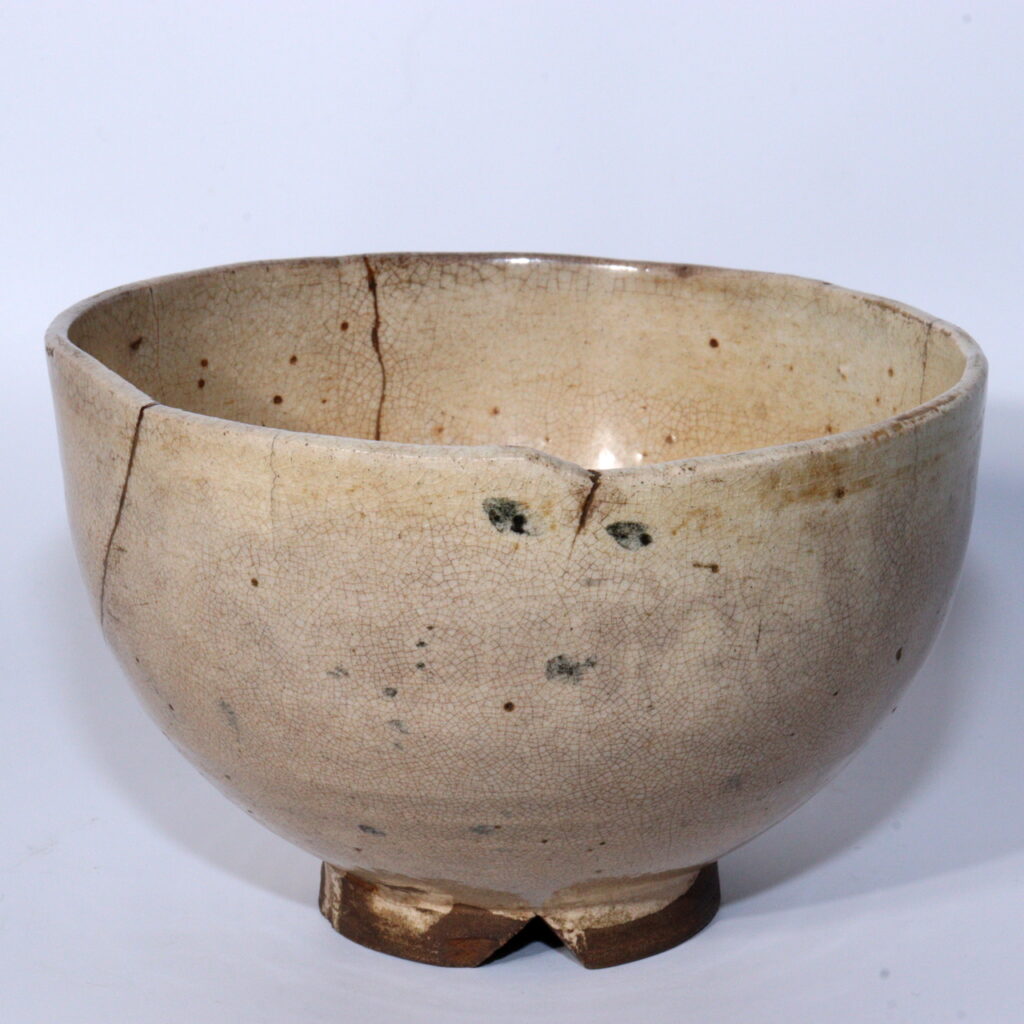
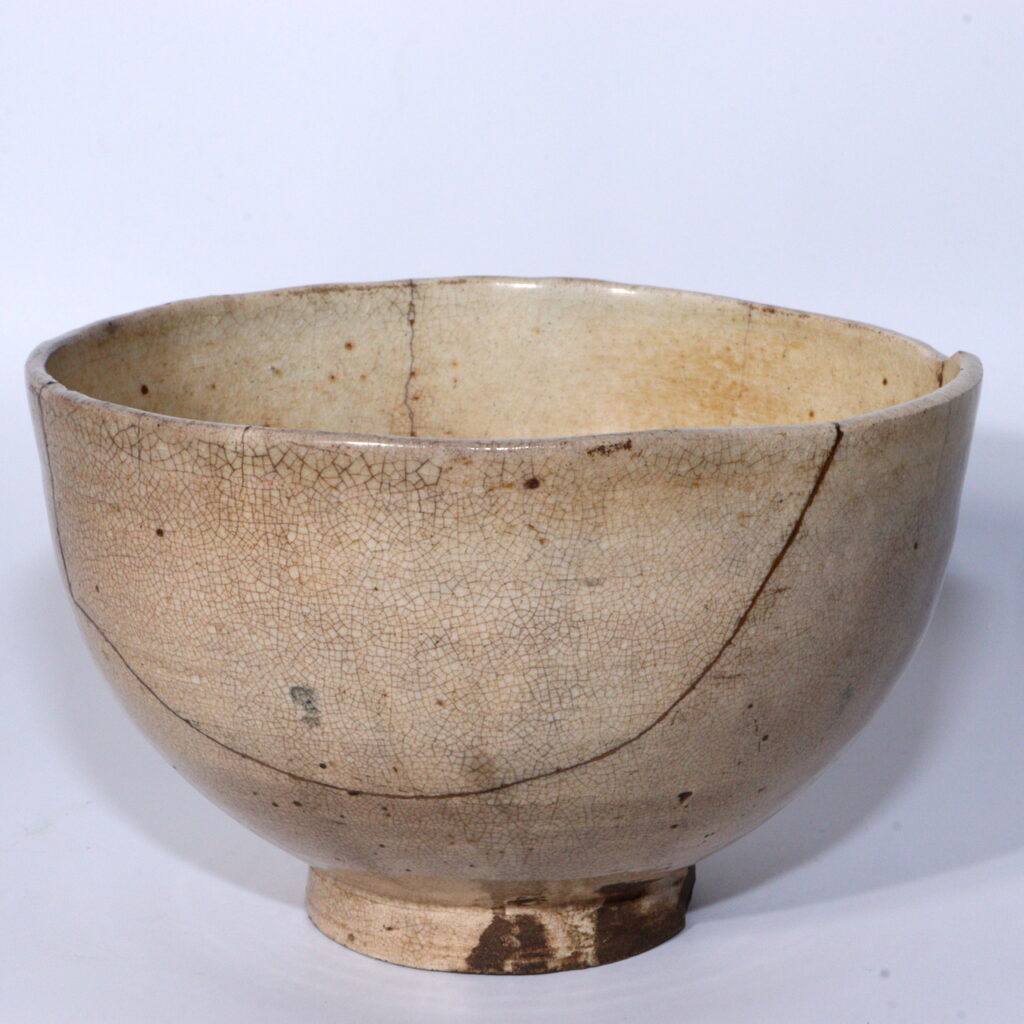
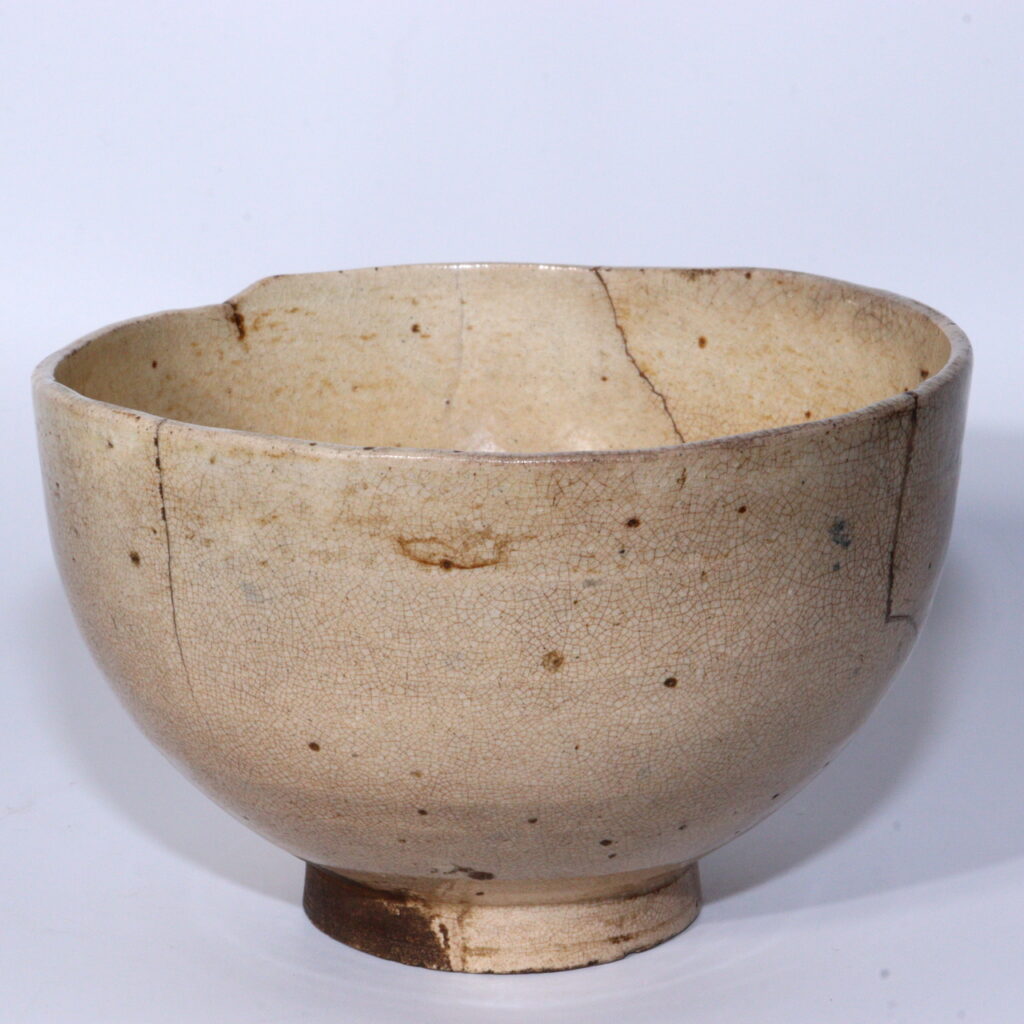
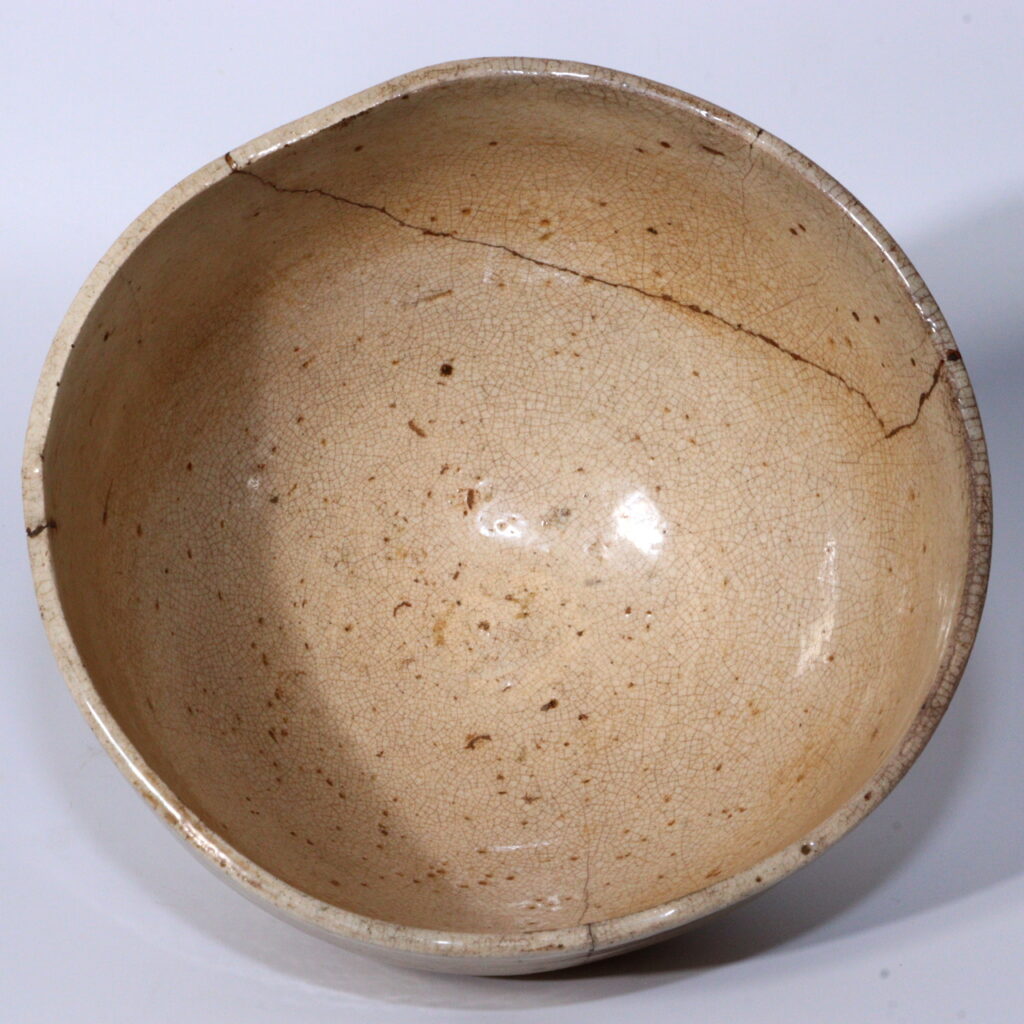
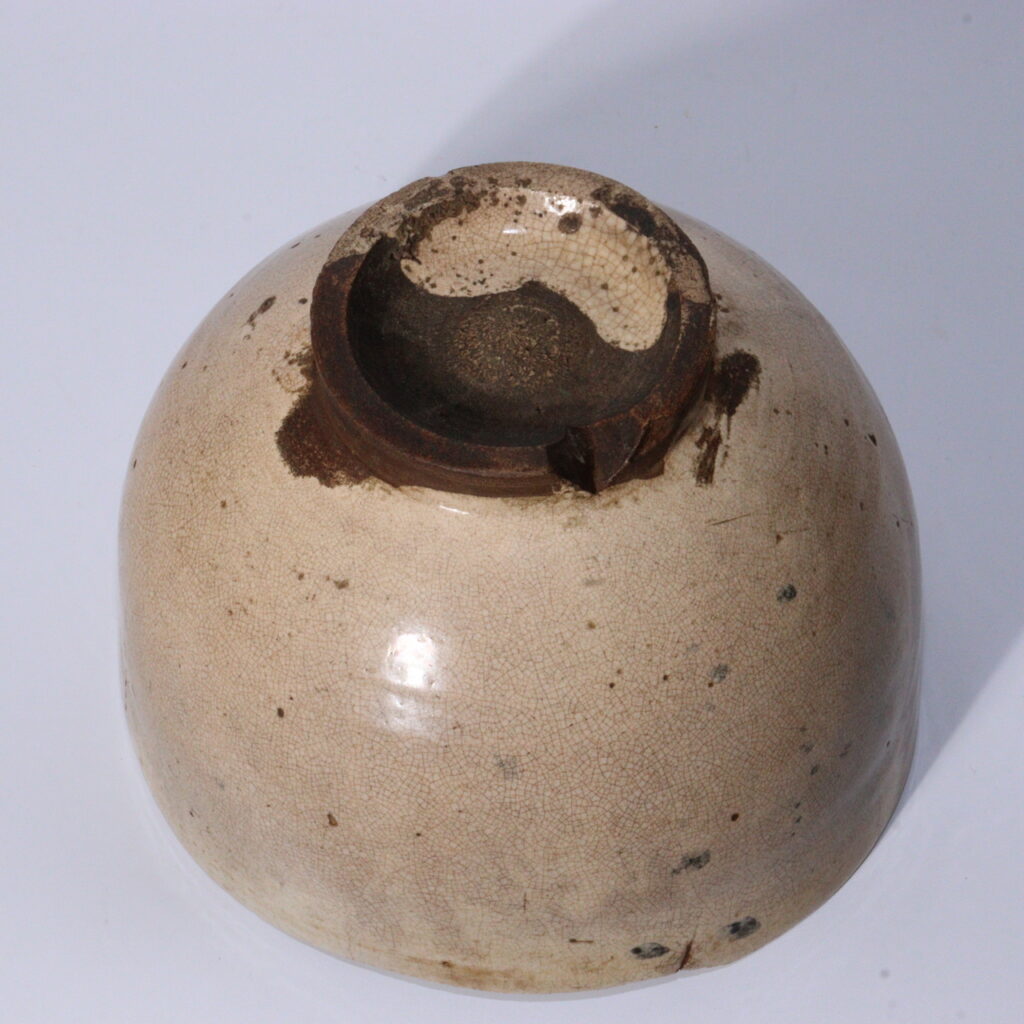
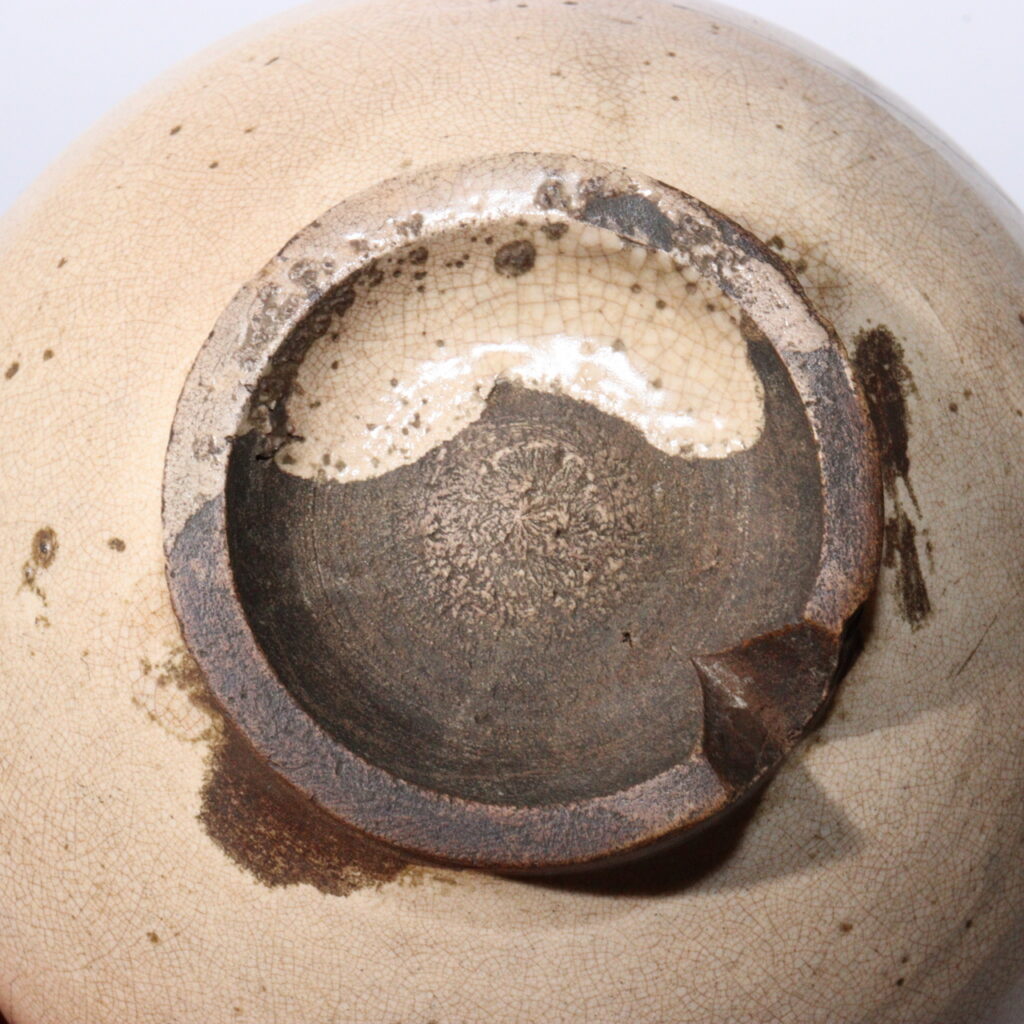
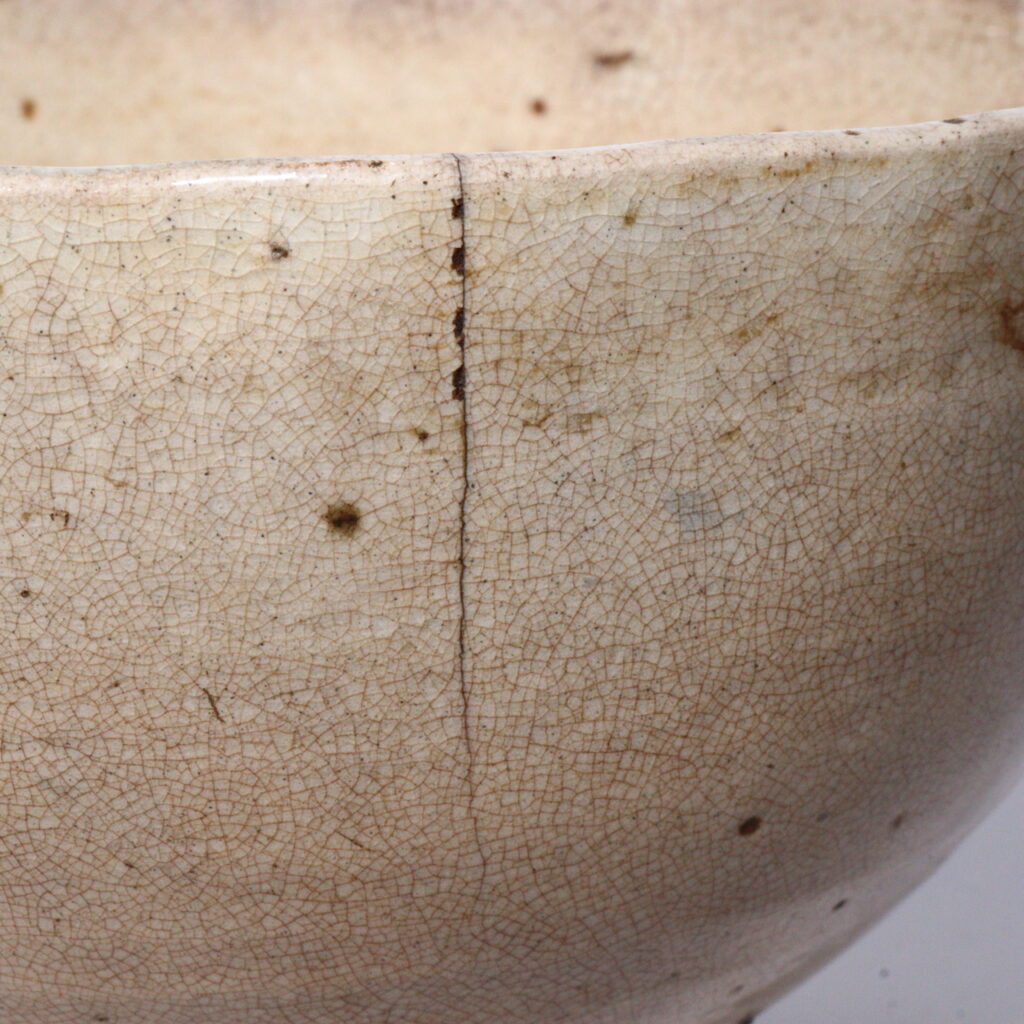
A Quiet Dialogue Between Japan and Korea, Preserved in Clay
Among the many Japanese antiques cherished by tea practitioners and collectors worldwide, Hagi ware occupies a singular place for its warmth, humility, and quiet depth. This tea bowl—crafted in the spirit of Korai chawan (Korean-style tea bowls)—embodies the subtle aesthetics of the Edo period, a time when Japan’s tea culture refined the art of imperfection into timeless beauty.
The Story Behind This Piece
This Hagi ware tea bowl originates from Ryūkōji Temple, a historic temple where tea and Zen have long intertwined. The piece was later gifted to the temple, as noted by an inscription on the back of its wooden tomobako (storage box), dated to Spring Higan, Shōwa 40 (1965)—a seasonal Buddhist festival celebrating ancestral remembrance.
The box bears the bold inscription “Hagi-yaki Kōrai-cha” and “Keisoku Chawan”—literally, “Hagi ware, Korean-style tea bowl, Chicken-foot base.” This term refers to the distinctive wari-kodai, or “split foot” design, which gives the bowl its characteristic tripod-like stance, recalling both Korean Buncheong ware and Japanese rustic sensibilities.
During the Edo period, Japanese potters in the Hagi region of Yamaguchi were deeply inspired by imported Korean ceramics brought over during the Momoyama and early Edo eras. These “Korean-style” reproductions were not mere imitations—they were reinterpretations, expressing a uniquely Japanese sensibility of wabi-sabi, where irregularity becomes a virtue and stillness becomes beauty.
The Beauty and Craftsmanship
At first glance, the bowl’s form feels simple. Yet, upon closer inspection, it reveals layers of quiet sophistication. The soft, milky glaze displays a fine network of kannyū (natural crackle), a hallmark of Hagi ware’s evolving patina. Faint iron freckles and minute glaze drips speak to the potter’s hand and the unpredictable magic of wood-fired kilns.
The texture invites touch—slightly porous, cool to the fingertips, and warm when held during tea. The muted tones of beige and gray, touched by the kiln’s breath, evoke the transience of nature—a fleeting moment captured in clay. This quality, celebrated in Japanese aesthetics, resonates deeply with the spirit of Chanoyu, the tea ceremony.
Unlike the ornate Chinese porcelain prized for perfection, Hagi ware embodies imperfection as beauty—an earthy elegance born from restraint. Its glaze absorbs water over time, allowing the bowl to change subtly with each use, creating what tea masters call “Hagi no nanabake”—the “seven transformations of Hagi,” as the vessel matures alongside its owner.
Its Value for Collectors Worldwide
For collectors and tea enthusiasts, this bowl holds layered appeal:
- Cultural heritage: A direct link to the Edo period’s aesthetic ideals and Japan’s enduring dialogue with Korean ceramic traditions.
- Historical documentation: The box inscription traces its temple provenance and mid-20th-century offering, enhancing its authenticity.
- Artistic presence: Its form and glaze exemplify traditional Japanese craftsmanship, blending functionality and spirituality.
- Decorative harmony: Its subtle hues and organic form suit both traditional tea spaces and modern interiors seeking wabi-sabi aesthetics.
- Investment in legacy: Hagi ware continues to be collected by museums and tea practitioners worldwide as a symbol of quiet refinement and cultural depth.
Conclusion & Product Link
This Hagi ware Korai chawan carries centuries of dialogue between Japan and Korea, Zen and craft, use and contemplation. It stands as both a vessel and a teacher—reminding us that true beauty lies not in perfection, but in presence.
👉 View this item here:
https://koedo-sun-art.com/search?q=PCP230&options%5Bprefix%5D=last
If this piece has already found its new home, please explore other Japanese antique collections here:
🔗 https://koedo-sun-art.com